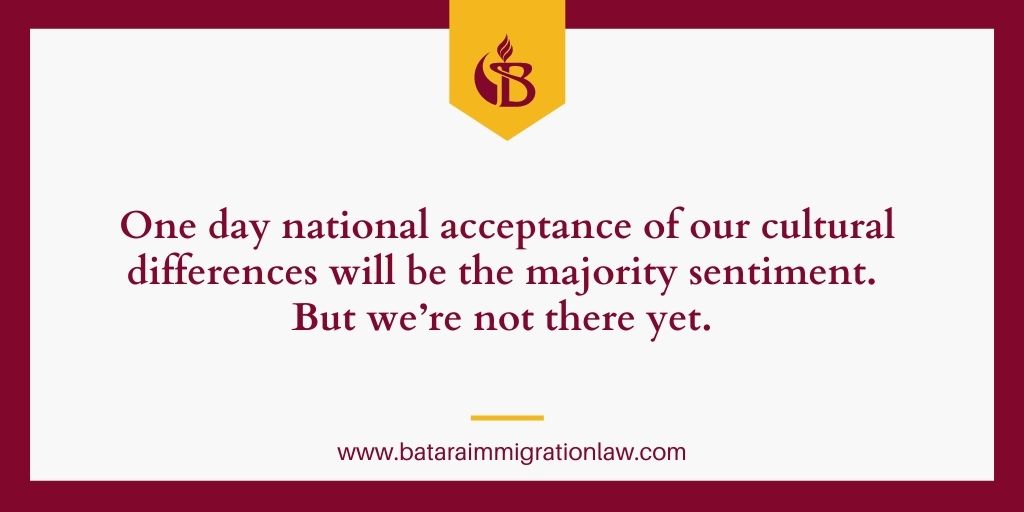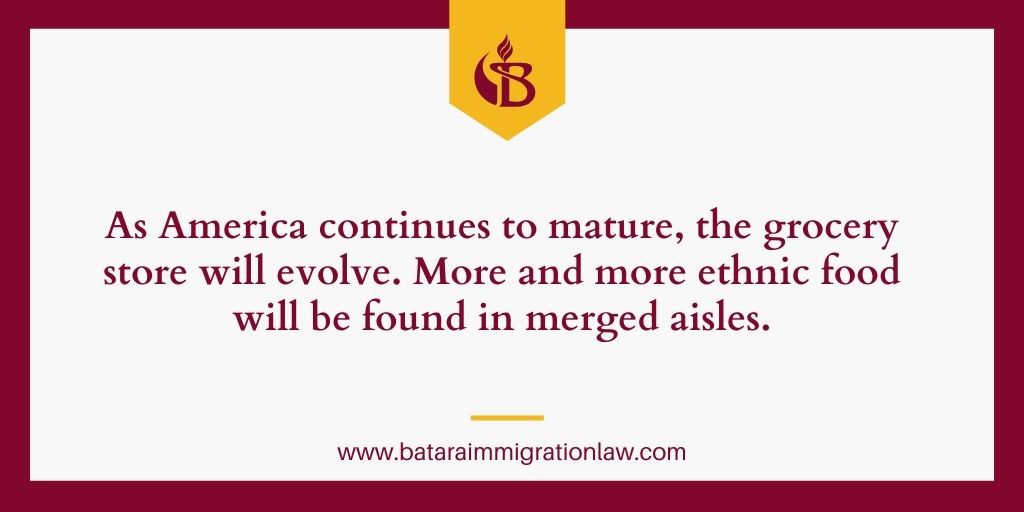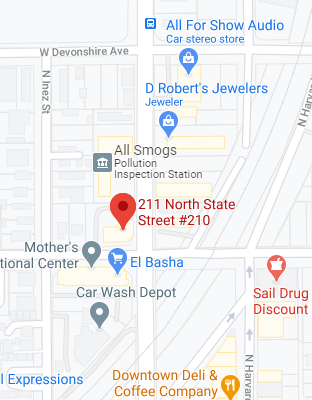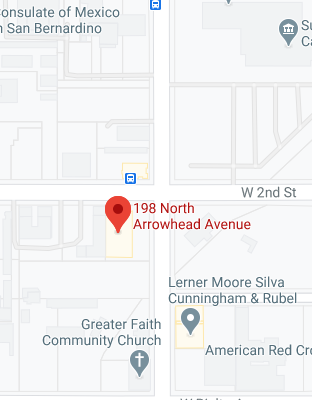
The New York Times recently asked, “Why Do American Grocery Stores Have An Ethnic Aisle?”
At first glance, the question seems simplistic. One might even ask, “What’s the big deal? They’re just grocery aisles.”
But, in actuality, the question reflects issues larger than food aisles. The question reflects a changing country.
The question reflects diversifying taste buds, diversifying food preferences, diversifying cultural influences.
These changes speak to the history of the United States – yesterday, today, and tomorrow.
Does Anyone Not Have A Favorite
Ethnic Food?
Over the years, I’ve often been asked to address students in career development courses at local high schools.
Because we’re a politically divided country, and because addressing that divide will be a crucial task for our nation’s future leaders, I sometimes open with a mini-food survey.
I ask questions like: “Who likes pizza?” “Who likes sushi?” “Who likes tacos and bean burritos?”
Nearly all hands shoot up for at least one of the food items mentioned.
That opens the door for me to discuss diversity.
I discuss the importance of tolerance and respect for each other, despite our differences.
Unfortunately, we’re not there yet.
We’re in this grey zone – an era where many still cling to the notion that inclusion is bad, exclusion is good.
That notion is wrong, of course.
One day national acceptance of our cultural differences will be the majority sentiment. But we’re not there yet.

That’s why the New York Times article stood out for me.
Despite helping folks from over 100 different nations as a green card attorney to become members of the American tapestry, I’ve never paid much attention to how ethnic food is divided in supermarkets.
I know what foods, spices, and condiments I like. I know how to find them.
Yet, as I read the Times piece, I realized the debate over the placement of such foods does reflect the American social discord today – as the country wrestles with cultural changes.
Ethnic foods, as the Times pointed out, are sold in 2 different sections.
Some are situated in sections where the ethnic item is similar to other non-ethnic food products.
German Hot Dogs in the hot dogs section. Jewish Rye Bread in the bread section.
Other ethnic items are placed in sections where the entire aisle is labeled as “ethnic foods.”
Behind these placements, there are assumptions.
Assumptions about which foods are considered ethnic and which ones are not.
Or to put it another way, some foods are seen as “minority foods” whereas others are perceived as “mainstream”.
Grocery Stores In Transition: The Gradual Death Of Separate Ethnic Food Aisles
The main argument in favor of ethnic food aisles is that they help customers navigate the supermarket. Store owners fear their elimination would confuse shoppers.
However, there are those who believe that the use of ethnic aisles is antiquated. They assert ethnic food aisles no longer need to play a role in grocery discovery. Consumers will adapt and find their desired food items.
This line of thought postures that products displayed in the ethnic aisle should be blended – that is, integrated – into the regular category-driven aisles throughout the store.
Some take this perspective a step further. Like renowned chef David Chang, they feel the ethnic aisles are a lingering bastion of racism, a vestige of cultural segregation.
Here’s my view.
Although such placements are tied to our country’s racial past, they are not necessarily based on conscious racial animus today. Some are, some are not.
Placements have long been primarily driven by economics.
As America continues to mature, the grocery store will evolve. More and more ethnic food will be found in merged aisles.
 Ethnic foods are here to stay.
Ethnic foods are here to stay.
The U.S. diet is changing. Many foods from abroad are now seen as healthier.
Television channels and online websites dedicated to unique foods, tasty recipes, and international cuisine open the door wider to “global taste buds” each passing year.
As palates change, grocery economics will change.
Newer food items will likely remain in general ethnic or culture-specific aisles – but only until the demand for such food items grows to a certain level.
Eventually, all of us will be part of a minority cultural group. Accordingly, we will all be part of the mainstream.
The reality is this.
Ethnic foods are here to stay.
Like cultural diversity.
Recommended Reading:
Ready to take a serious and honest look at the strengths and weaknesses of your immigration case? Let’s get started with a personalized strategy and planning session . . .
Here's How It Works
1
Call Our Office
Immigration law doesn’t have to be confusing. You don’t have to live in fear of being deported and separated from your family. A comprehensive 30-minute Strategy And Planning Session will take the stress out of not knowing your options first-hand.
2
Meet With Carlos
Every case is unique. We refuse to take cookie-cutter approaches to your case. After we discuss the ins and outs of your immigration and family situation, Carlos will outline your chances for success and how to overcome obstacles standing in your way.
3
No Pressure - No False
Promises
Hiring a lawyer is a big investment, and we will not pressure you to hire us or push you into a plan you don’t understand. If we cannot help you, we will tell you. We will not take your case, unless we believe we can make a difference for you and your family.




